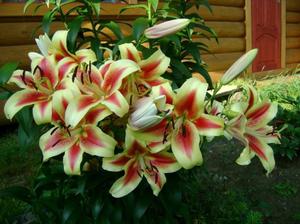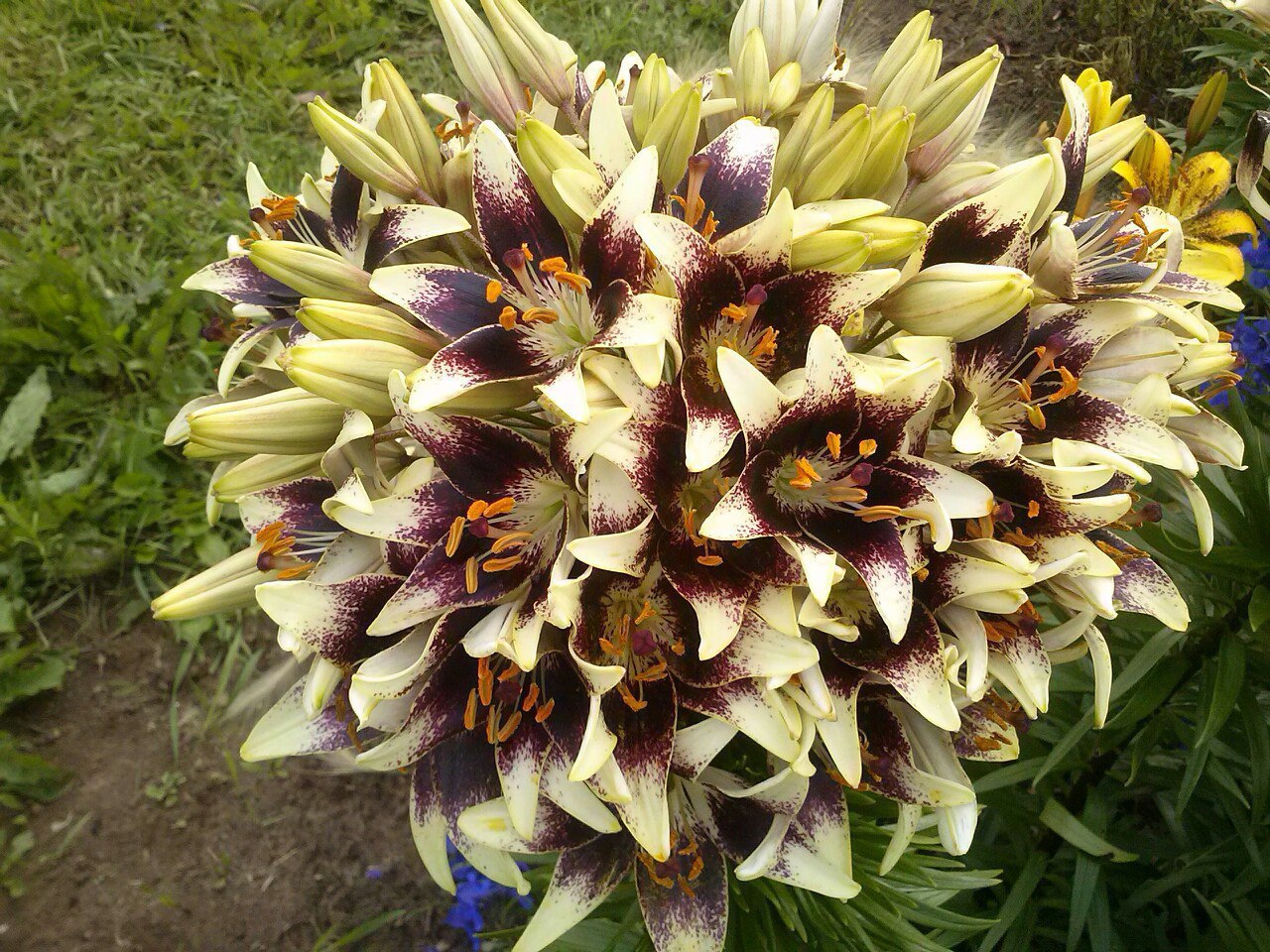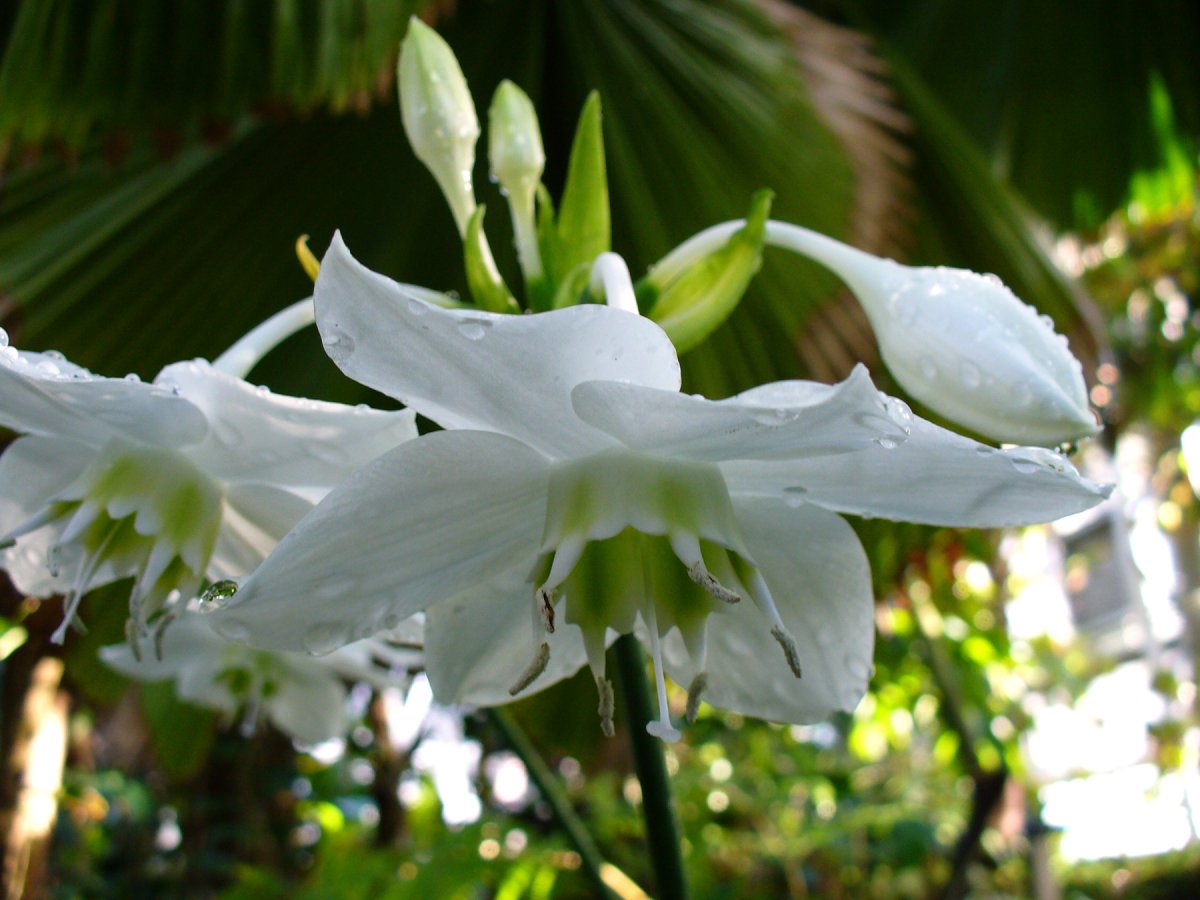Among home flowers, plants with rich greenery, beautiful large flowers with an unusual aroma take pride of place - all this is a lily. Naturally, medium-sized garden specimens are grown in indoor conditions, and small compact species that fit in pots. Although the house lily has a fairly short flowering period, it is readily grown.
After all, it serves not only as part of the interior, but also often turns into a collectible.
Types and varieties of room lilies
The plant is classified according to the structure of their flower:
- The flowers are bowl-shaped, wide open. Such petals are possessed by varieties: Lily gilded, Lily beautiful, Lily Empress of China. The Grand Commander variety is considered one of the best.
- The petals are funnel-shaped, collected in a tube. Similar flowers can be seen in varieties, which are more extensive: Royal Lily, Long-flowered Lily, Royal Gold and others. Their flowers range in color from pale yellow to bright orange. The house lily also belongs to this species.
- Flowers with bent petals. This group does not differ in the variety of varieties, as is the case in other species. The size of the plants is quite small - up to 60 cm, the flowers are also small - the diameter is only about 5 cm. The varieties L. Citronella and the dwarf lily are common.
Indoor lily: home care
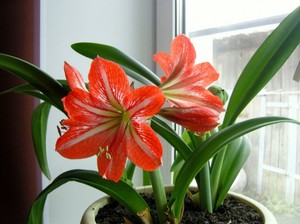 When growing garden and indoor crops, air humidity and temperature are of no small importance. Different varieties have their own level of tolerance to high and low temperatures and photosensitivity.
When growing garden and indoor crops, air humidity and temperature are of no small importance. Different varieties have their own level of tolerance to high and low temperatures and photosensitivity.
- The Asian hybrids are recognized as the most unpretentious in terms of care.
These plants have the longest stem, and the flowers are distinguished by fancy colors with specks, spots, stripes. Ethat group grows well in an area full of sunas well as in partial shade. They require moderate watering, more or less resistant to parasites and diseases. They have one drawback - the lack of smell, but this minus of Asian hybrids is compensated by the beauty of the colors.
- Curly hybrids grow in moist soil enriched with leafy humus, shade will suit them. They are also famous for their excellent resistance to cold and disease.
- The most beautiful varieties of lilies are recognized as snow-white hybrids. Any beauty is accompanied by moodiness, so they are very demanding in their care.
- Long-flowered hybrids are known by another name - house lily. As they are often grown as a houseplant. Lily fell in love with many thanks to its large flowers and rich aroma. Moreover, the plant is demanding to care for and prone to disease, so growing in the garden is problematic. On the windowsill, the home culture feels much more secure with proper care. It is important to ensure that a spider mite does not appear on the flower.
When to get a home lily?
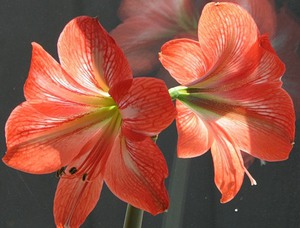 Indoor crops are bought in the form of a bulb because it is a bulbous plant. Autumn is the best season. Pay attention to the condition of the tuber: if you find scales, spots, wrinkles, then it is not suitable for planting. If no such signs are found, disinfection is still carried out.Malofos or manganese solution can act as an antiseptic.
Indoor crops are bought in the form of a bulb because it is a bulbous plant. Autumn is the best season. Pay attention to the condition of the tuber: if you find scales, spots, wrinkles, then it is not suitable for planting. If no such signs are found, disinfection is still carried out.Malofos or manganese solution can act as an antiseptic.
An indoor plant usually has shoots and leaves on sale, sometimes even a flowering plant is sold, so in order to extend the flowering period it is fed with special fertilizers, it is important not to overdo it with watering.
Landing rules
They choose a pot, soil, do not forget about good drainage. It is quite simple to grow an indoor lily at home. Planted in the substratespecially formulated for bulbous plants, a light soil that is rich in nutrients and has good drainage properties is also suitable.
The bulb should take the central position of the pot, the distance to the walls should be within 3 cm. Cover with soil to the middle of the bulb. After that, the well-being of the plant will depend on the time that is given for the rest period and the air temperature.
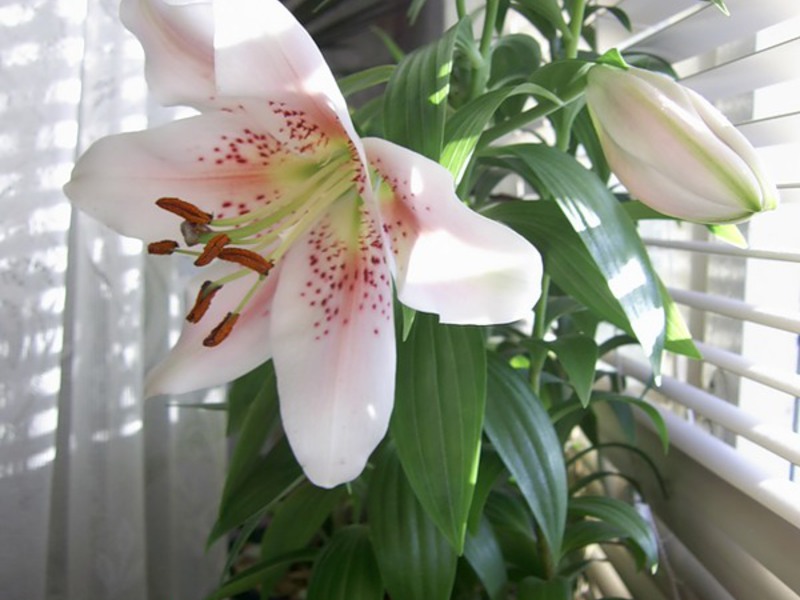
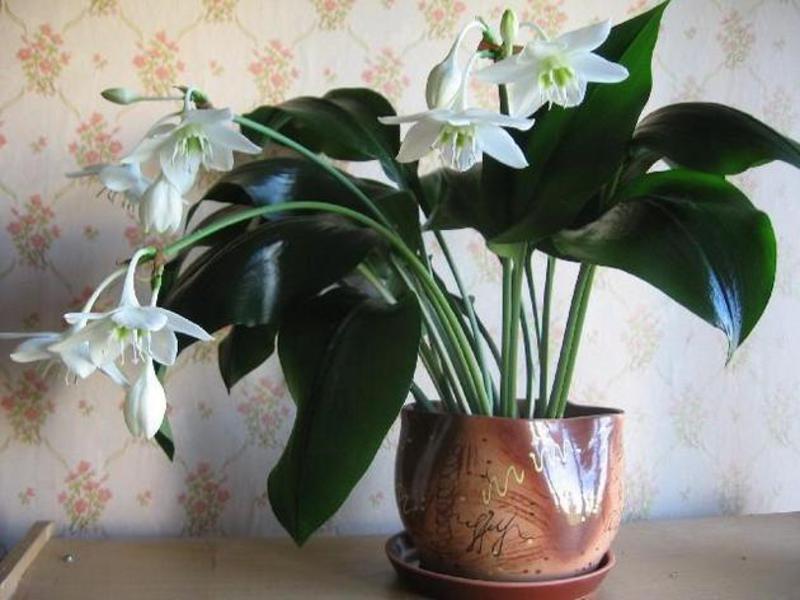

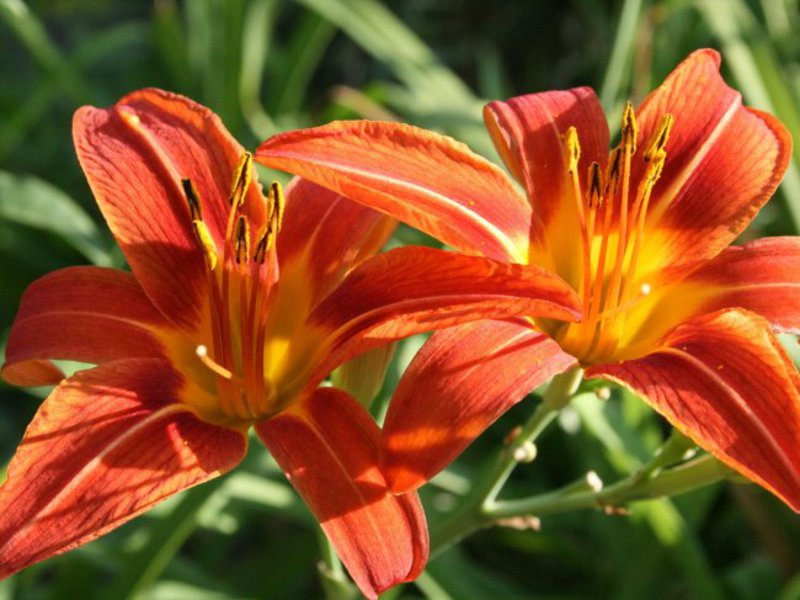
With the correct cultivation of a bulbous plant, a home culture can delight with flowering at different times of the year.
Domestic lily belongs to the genus Hippeastrum and amaryllis, therefore, it really needs warmth and light during the flowering period, and during rest they prefer darkness and coolness. therefore the best place will be a sun-drenched windowsill... On hot days, it is better to keep the windows open, since this houseplant, like all amaryllis, needs a stream of fresh air, especially after sunset.
Watering should be reduced after the flowers fall, the external conditions change radically: light replaces shadow, moist heat turns into dry coolness. If you follow a similar scheme for growing a room lily, then you can achieve repeated flowering.
Room lily after flowering
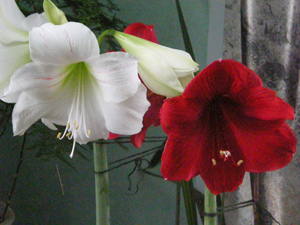
Home lily refers to flowers that do not so often and do not please the owners with their beauty for a long time. but you can achieve an increase in the flowering period and add its number... It all depends on the storage period of the plant when it is in a state of sleep.
So, after flowering, the home lily is placed in a dry, cool place. Can be transplanted into new soil with the addition of ash. It should occasionally pamper the bulb with top dressing and watering, then in a state of active growth, problems with flowering will not arise.
Diseases and pests
If the plant is well cared for, the likelihood of disease is reduced. Among the most common diseases is red bulb rot. This disease develops in wet and cold conditions. To save the bulbsoil that interferes with pruning of affected areas, including affected roots, should be removed. After the procedure, all exposed sides are treated with a fungicide and sprinkled with crushed activated carbon. Then the bulbs are dried for 3 days, and the watering intensity is reduced.
Plant parasites can cause irreparable damage to the plant. Among the most common pests that attack not only lilies, but all domestic flowers are: spider mites, mealybugs, scale insects. Actively insecticides destroy these insects... However, it is better to prevent their occurrence with proper care. For example, a spider mite appears due to the increased dryness of the air; its appearance can be prevented by creating humid conditions.
If the house lily is well cared for, it is rarely affected by pests and diseases, and the plant looks healthy and strong. Leaves become lethargic and pale due to excess or lack of moisture, the flowers turn dark from the cold, and when the sun is too hot, the color becomes pale. Therefore, you should carefully monitor the state of the room lily and take appropriate measures in time, then the beauty of flowers will decorate your home for a long time.
